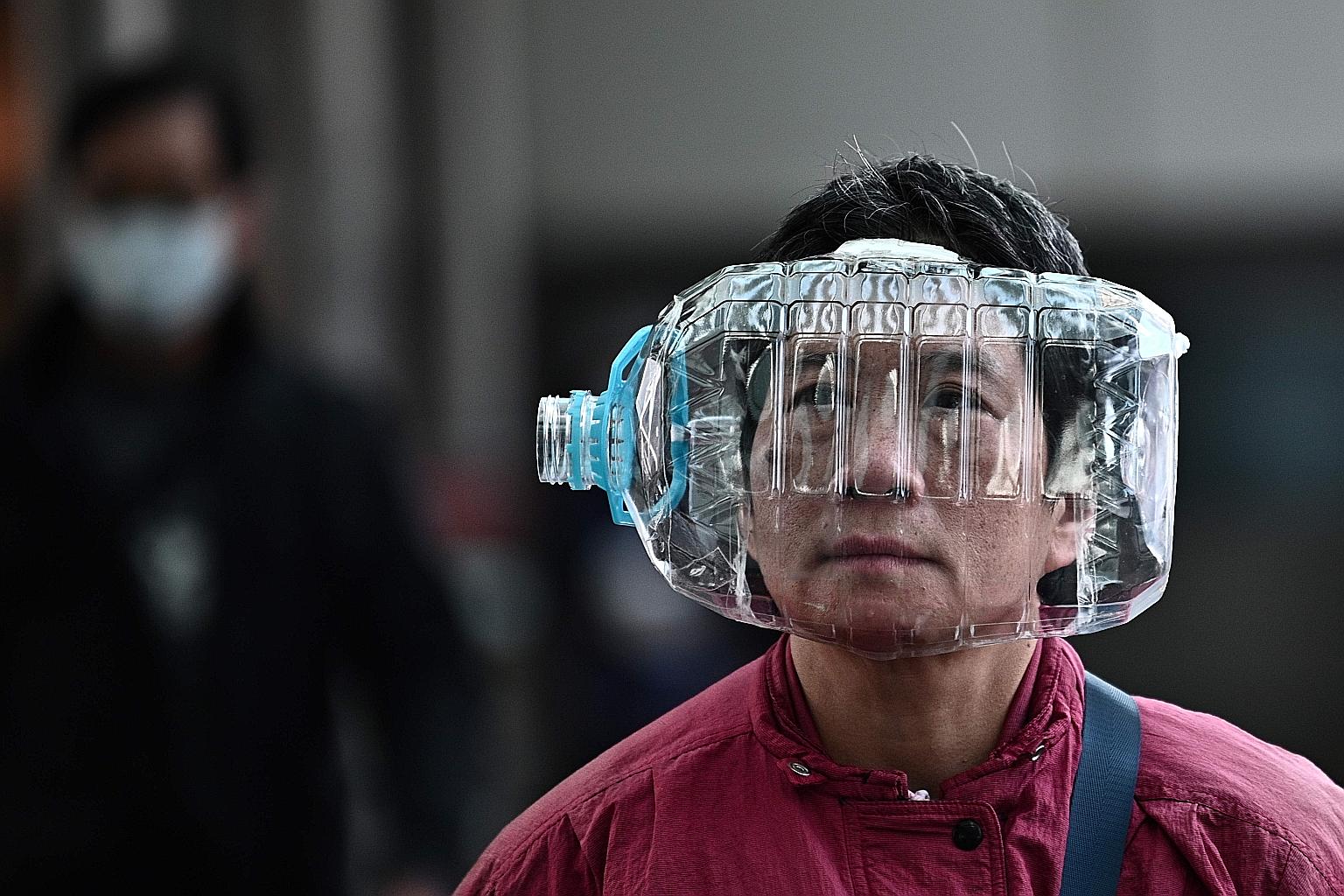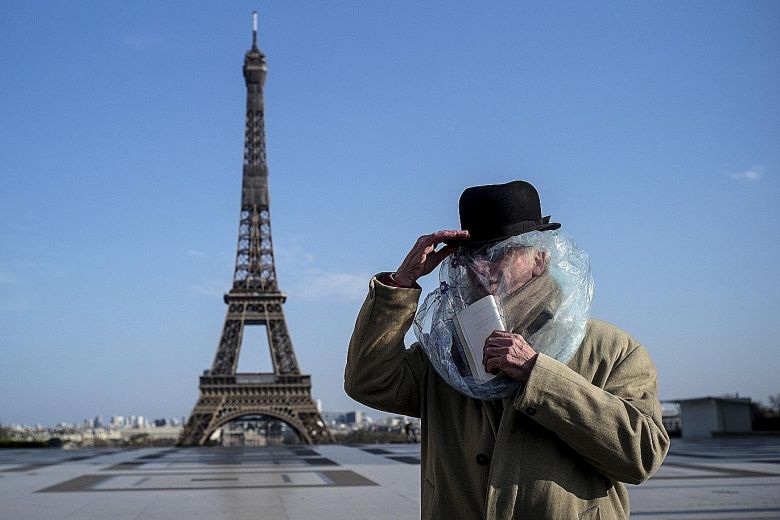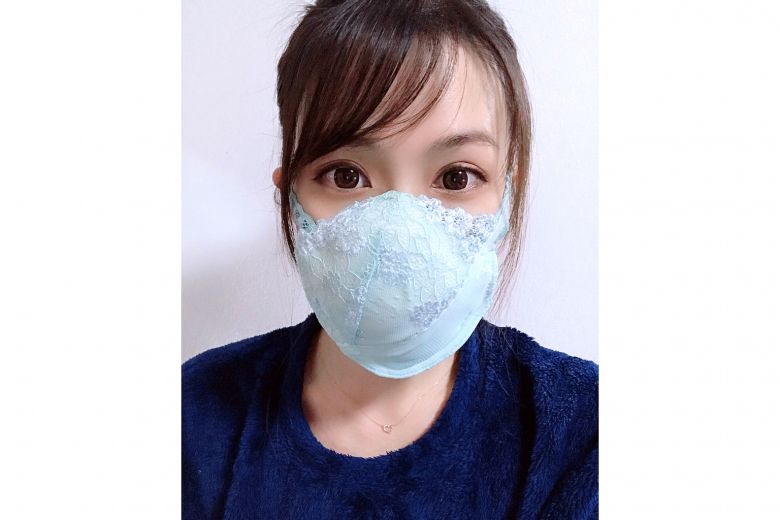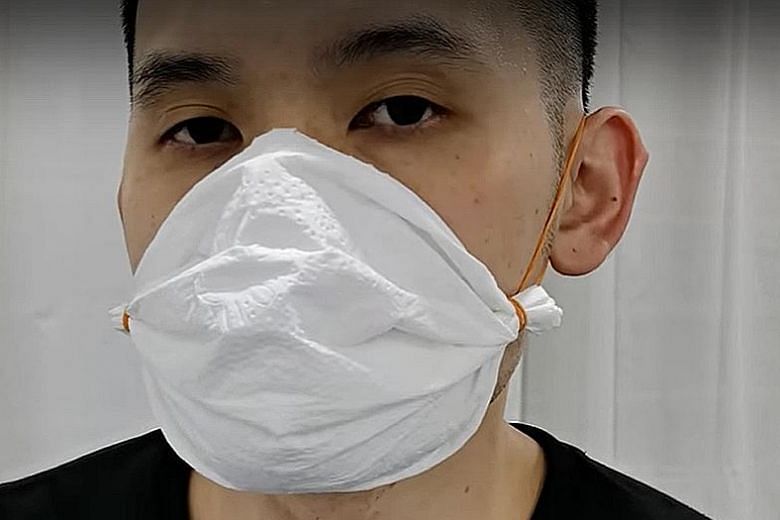KEEP CALM: A SURVIVAL GUIDE
Do homemade masks work?
The short answer: Not likely. Here's why
Sign up now: Get ST's newsletters delivered to your inbox

Plastic bottles.
PHOTOS: EPA-EFE, AGENCE FRANCE-PRESSE, CHEN HSIAO-TING/ FACEBOOK, ASAHINA YUMENO/TWITTER, THE IDEAL MOBILE/ YOUTUBE
Follow topic:
Amid the high demand for face masks as the coronavirus pandemic rages on, many guides have appeared online teaching people how to make their own masks from everyday items such as wet wipes, paper towels and rubber bands.
But do these DIY masks work? Two experts interviewed by The Sunday Times are sceptical, explaining that these masks are not likely to keep droplets in for wearers who are ill, or keep droplets out for healthy wearers who get coughed or sneezed on.
Dr Teo Tee Hui, 45, a council member of The Institution of Engineers, Singapore, worries: "They may give a false sense of security and could paradoxically increase the risk of infection for wearers who touch their faces more often when wearing such masks."
In the context of the coronavirus, it is important for masks to be splash-resistant and able to filter out viruses effectively, says Dr Teo, who is also a senior lecturer at the Singapore University of Technology & Design's science, mathematics and technology cluster, as well as its engineering product development pillar.
Mr Winthrop Wong, 43, director of Wellchem Pharmaceuticals, which supplies masks to hospitals in Singapore, says homemade masks are largely not helpful or practical.
"If you are ill, the best thing to do is go see a doctor. The only circumstance when it might help to wear a DIY mask is if you are ill at home, need to get to your nearest clinic, and cannot get hold of a surgical or N95 mask."
But he adds that holding a handkerchief or towel over your mouth might be just as effective.
"Once you arrive, I believe our healthcare facilities and institutions will have the necessary medical supplies, such as proper surgical or N95 masks."
The experts give their take on five DIY masks out there.
PLASTIC BOTTLES
Some people from Hong Kong and mainland China have been spotted wearing plastic bottles on their heads to cover their eyes, nose and mouth.
Experts say: At best an air shield, which does not do much in keeping droplets in or out. It is also dangerous because at certain temperatures, the plastic material might release harmful gases that are bad for the wearer's health.
PLASTIC BAGS

In many countries, people have been seen with plastic bags covering their faces or bodies.
Experts say: Again, at best an air shield. In the worst-case scenario, the bag can trap unhealthy air or air droplets from an infected person, making the situation worse.
There is also a danger of suffocation because there are no openings, so the wearer is inhaling the same air over and over again.
TAILORED CLOTH MASK

Taiwanese doctor Chen Hsiao-ting created a mask from cloth, with the assistance of a tailor. His mask, unveiled on Facebook, had an opening for a piece of filter material to fit inside, which was a wet wipe that had been dried beforehand.
Experts say: Of all the DIY masks mentioned, this is most likely to keep droplets in for wearers who are sick.
However, a wet wipe is not designed as a filtration device, so the air that the wearer breathes comes through the cloth or from the sides of the mask, meaning that droplets can still escape.
BRA MASK

Japanese model Asahina Yumeno transformed one of her unused bras into a mask, with the help of a needle and thread, and shared photos of her creation on Twitter
Experts say: For wearers who are ill, this mask is not effective in keeping droplets in as it is not fluid-resistant. Its porous material means that if someone sneezes on you, the droplets will stick to the mask and even be absorbed into it.
PAPER TOWELS

On YouTube channel The Ideal Mobile, Malaysian Joshua Wong demonstrates how to create a mask using paper towels and rubber bands. He folds a few layers of paper towels together and ties the ends up with rubber bands, which are attached to the wearer's ears.
Experts say: Not protective or durable, and will wear out easily. The wearer might also end up breathing in fine paper or dust particles.

